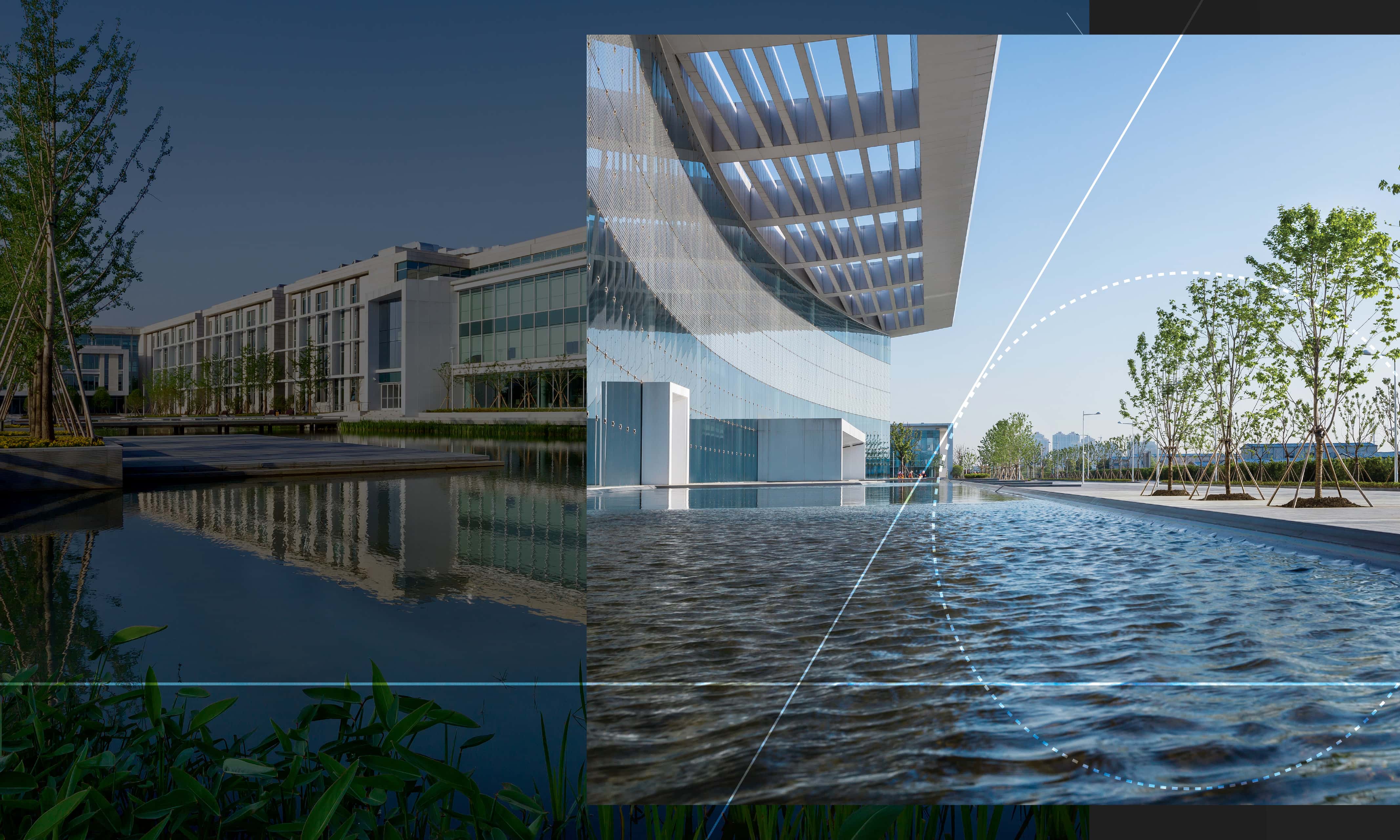Duke University’s 200-acre global campus in Kunshan, PRC is designed with form and function in mind. The design for the campus embraces the region’s challenges of heavy rainfall and urban flooding to elevate the overall campus experience, and creates a sustainable and tranquil learning environment. Duke Kunshan brings together over 200 students from 27 countries, providing opportunities for students and faculty to learn, live and grow inside and outside of the classroom. The global design team worked in tandem to conceptualize, design and implement Duke University’s Kunshan campus with the goal to respect the region’s culture; provide a unique space for collaborative learning; and to integrate sustainable design features that manage on-site stormwater and controls water levels.

Form and Function: Culture
Historically, water has played an important role in the culture of the Jiangnan region where the campus is located. Throughout the region, water is used as a means of transportation, supporting civic life; as a landscape element, extending the public space outdoors; and in courtyards, providing a gathering space for people.
Taking inspiration from the water-town culture of the region, water is used as a design theme throughout the campus, with a four-acre central lake, living water gardens and various water features, such as fountains, spread throughout. By incorporating water into the design, the campus is anchored in the culture of the region, extends education into the landscape and allows for sustainable solutions that make Duke Kunshan the best possible place.
Form and Function: Space
Form and Function: Sustainability
What may not be realized at first glance is the intricate stormwater management systems on the campus that work to create the sense of serenity at Duke Kunshan. While water features on the campus act as aesthetic amenities, they also serve a greater purpose to reduce runoff and control water levels. On campus water is managed through a three-part system and can enter the site through any one of these three systems. Each of these systems work together to control flooding events, manage runoff and treat water for reuse.
In the first system, water travels through a series of living water gardens that support local wildlife, flora and fauna. This system is designed to foster diverse water habitats through an aquatic plant palette. Today, these water gardens are home to birds, amphibians and small mammals.
In the second system, water is treated through subsurface infiltration ponds. By constantly moving the water through these ponds, it is treated and purified to LEED standards. Finally, the water reaches the celebration pond, honoring its journey to purification.
In the third system, water travels through the central lake that was designed to mimic the seasons of the year. This system controls water elevations in relation to the student population on campus. When the student population is low and the water level is high, the public spaces surrounding the lake are designed to be submerged in water.
Duke Kunshan is a catalyst project for the region, showing that water conservation on a global campus is possible. The design for the campus controls the annual amount of stormwater runoff and runoff is currently at a better state than at pre-development. Recently, the campus was recognized as part of China’s Sponge City initiative, aimed at promoting development practices that treat and purify rainwater and curb flooding risks. Duke Kunshan’s success has led to positive feedback from the community regarding the Sponge City Method, leading to the design and construction of other Sponge City projects in the City of Kunshan.
Project Team:
LandDesign
Gensler
JLL
Applied Techologies Management (ATM)
Futurepolis
Hezhan


